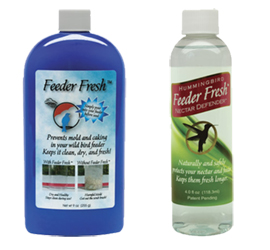View all of the titles in the
NatureSmart Bookstore

by Stan Tekiela
© NatureSmart
June 9, 2024
For me, I enjoy all aspects of nature, not just birds. I find all of nature fascinating and that is what keeps me interested. So, while leading a photo tour to Florida recently I was so excited to see a crazy cool critter that isn’t what you expect when you see it. A true rule breaker.
I was on a boardwalk over a shallow wetland. A wide variety of shrubs and small wetland trees were dotting the landscape along with a ton of aquatic plants and algae. The water was only a few inches to about a foot deep. Long-legged birds and ducks were swimming/walking around feeding on insects and plant leaves. It was a great example of an ecosystem in balance.
I was looking at all the life forms when something different caught my attention. Standing in about 3 inches of water at the base of a large shrub was a small rusty brown, fuzzy mammal, a Marsh Rabbit (Sylvilagus palustris). Yep, you read that correctly, a rabbit standing in the water/marsh.
While I have seen many Marsh Rabbits before, they have all been on dry land. Never had I seen a Marsh Rabbit in a marsh. I was thrilled and immediately started taking pictures because I didn’t know how long it would stay out in the open.
The Marsh Rabbit is a semi-aquatic cottontail rabbit that is found in the swamps and marshes of coastal areas of the southeastern United States of Florida, Georgia and South Carolina. It tends to be rusty red in color and has shorter legs and ears than the more familiar backyard Eastern Cotton-tailed Rabbit. It is not uncommon for individuals in Florida to be melanistic, which means they can have very dark to nearly black fur.
Sometimes they are called Marsh Hares, which is an unfortunate common name because they are not a type of hare. Rabbits and Hares are very different kinds of critters. I will need to write a separate column about the differences sometime in the future.
The Marsh Rabbit lives near the coast and tends to stay in freshwater marshes only. They breed year around with females being able to produce up to 6 litters of young each year. The female builds a nest just above water line with aquatic plants and lines it with fur she pulls from her body. Nests are usually deep in dense thickets and surrounded by water, presumably to help protect the young in the nest.
They are herbivores, eating the leaves and stems of marsh plants including cattails, bullrush, and other grasses. Like other rabbits, the Marsh Rabbit re-ingests their food through their poop. This is called coprophagy. After eating, they produce both hard and soft fecal pellets. The soft fecal pellets, known as cecal pellets, are re-ingested (eaten) to remove any nutrients that weren’t picked up the first time through their digestive system. The dry pellets are not re-ingested.
Since these rabbits are mainly nocturnal, I felt lucky to be able to see one during daylight hours. They usually spend their days resting in dense thickets to avoid predators. They often follow the same pathways, creating “runways” through the dense vegetation. While they often hop like other rabbits the Marsh Rabbit is known for walking on all fours, placing each foot down alternately like a cat or dog. They also have long toes, which is evident when you see their tracks in the mud.
They are excellent swimmers and often go to water to escape danger, submerging themselves to the point where only their eyes, nose and ears are above the water’s surface. Since their hind legs are shorter than other rabbits they aren’t as fast on land but still are able to make a quick getaway if chased by a predator.
When I spotted the Marsh Rabbit in the water, I was quick to tell the others in my group, but no one seemed to be interested. For some reason they didn’t understand the uniqueness of this rabbit and for so long I have wanted to see them in an actual marsh. I watched over the next 5 or so minutes as it munched on aquatic vegetation. I could see it was very comfortable standing and moving around in the water. After a while it walked off into the thick branches of an aquatic shrub. I was thrilled to have seen a very unique critter doing what doesn’t look normal for a rabbit. Until next time…
Stan Tekiela is an author / naturalist and wildlife photographer who travels extensively to capture images and video of wildlife. He can be followed at www.instagram.com and facebook.com. He can be contacted via his website at www.naturesmart.com.
The nationally syndicated NatureSmart Column appears in over 25 cities spanning 7 states: Minnesota, Wisconsin, Michigan, Illinois, Ohio, New York and Pennsylvania. It is a bi-weekly column circulated to over 750,000 readers.
Horned Lark
The overall population of ground nesting birds is steadily going down. Here in North America, we have hundreds of bird species who nest directly on the ground. Prairie birds such as Eastern and Western Meadowlarks are a good example. If you are older than 50 you most likely remember hearing...
Sharp-tailed Grouse
The rights of spring come in many different forms, shapes, colors, and patterns. But the end goal is always exactly the same—reproduction. In nature, everything can be boiled down to one of two things, finding food to survive and mating for reproduction. It’s as simple as...
Greater Prairie Chicken
I am not a stranger to getting up at O’ dark thirty, to be able to get out and capture some images of wildlife. Over the past 40 years I would say it is definitely in the hundreds if not thousands of times I’ve dragged myself out of bed so early. So, last week when the alarm went off...
Each year, during June and July, Stan Tekiela offers two world-class wildlife photography tours. Here's your chance to learn some tricks of the trade from a top professional.
View all of the titles in the
NatureSmart Bookstore
Check out Stan's latest photos at
NatureSmart Wildlife Images
Do you have any interesting wildlife in your backyard? Any nesting birds, deer, turkeys, reptiles, amphibians, or other unique wildlife? Or maybe a fox or coyote den?
If so, contact Stan at stan@naturesmart.com with your backyard wildlife. If he can get a good photo of the subject, he will send you a print of the photo to hang on your wall.
Order Prints and posters of Stan's photos at
» Prints & Posters
Hear Stan on radio stations all across the Midwest.
» More Info

When he's out in the field, Stan relies on his Vortex Razor binoculars and Vortex Razor spotting scope to help find the subjects for his award winning wildlife photography.

For thirty years, professional wildlife photographer Stan Tekiela has counted on Hunt's Photo and Video to provide him with professional photography equipment.
From tripods to camera bodies and lenses, Hunt's has been Stan's place for everything that he needs. Personal service and prompt shipping means Stan can count on Hunt's to support his professional wildlife photography career.


Professional Wildlife Photographer Stan Tekiela always uses Feeder Fresh in his seed feeders to help keep the feeders and food dry, clean and mold free.
He also uses Feeder Fresh Nectar Defender in all of his hummingbird feeders. It safely keeps nectar fresh longer.